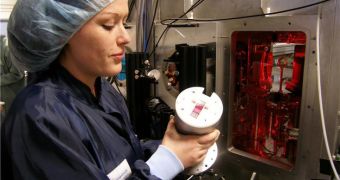German researchers are working on innovating cancer therapies applied to sensitive organs, such as the brain or bone marrow. Instead of using standard accelerators to create hydrogen and carbon ions, the group is looking into using compact lasers for the same job. The innovation could help save countless lives.
A team of investigators from the OncoRay center, in Dresden, and the Forschungszentrum Dresden-Rossendorf (FZD) research center, both in Germany, was recently able to demonstrate that using compact lasers is a viable alternative to existing technique of accelerating hydrogen and carbon ions.
All around the world, ion therapy facilities are being constructed at frantic place. These medical installations allow healthcare experts to treat the most delicate types of cancer – to the brain and bone marrow – by using alternatives to radiotherapy. Radiation has very negative effects on these organs.
Using ions, on the other hand, is both a lot safer, and a lot more accurate. That is to say, the beams accelerators produce are very focused, which in turn allows for tumors to be precisely targeted. As a result, only a very small amount of healthy tissue is being affected by the procedure.
Conversely, radiotherapy and chemotherapy affects entire organs indiscriminately. The amount of damage they do to the body is sometimes not worth it, doctors say, and this is why not all cancer patients are prescribed these extremely aggressive therapies. Their effects last for years.
At this point, only few facilities provide ion beam treatments to their patients, such as for example the Heidelberg Ion-Beam Therapy Center (HIT), in Germany. But, with the new innovation in compact laser technologies, the technique could be readily made available in other places around the world too.
The largest obstacle preventing this from happening now is the fact that particle accelerators are very large and difficult to operate. They also take up a lot of resources, and many research centers and hospitals simply don't have the money to afford providing their patients with access to such treatment options, AlphaGalileo reports.

 14 DAY TRIAL //
14 DAY TRIAL //